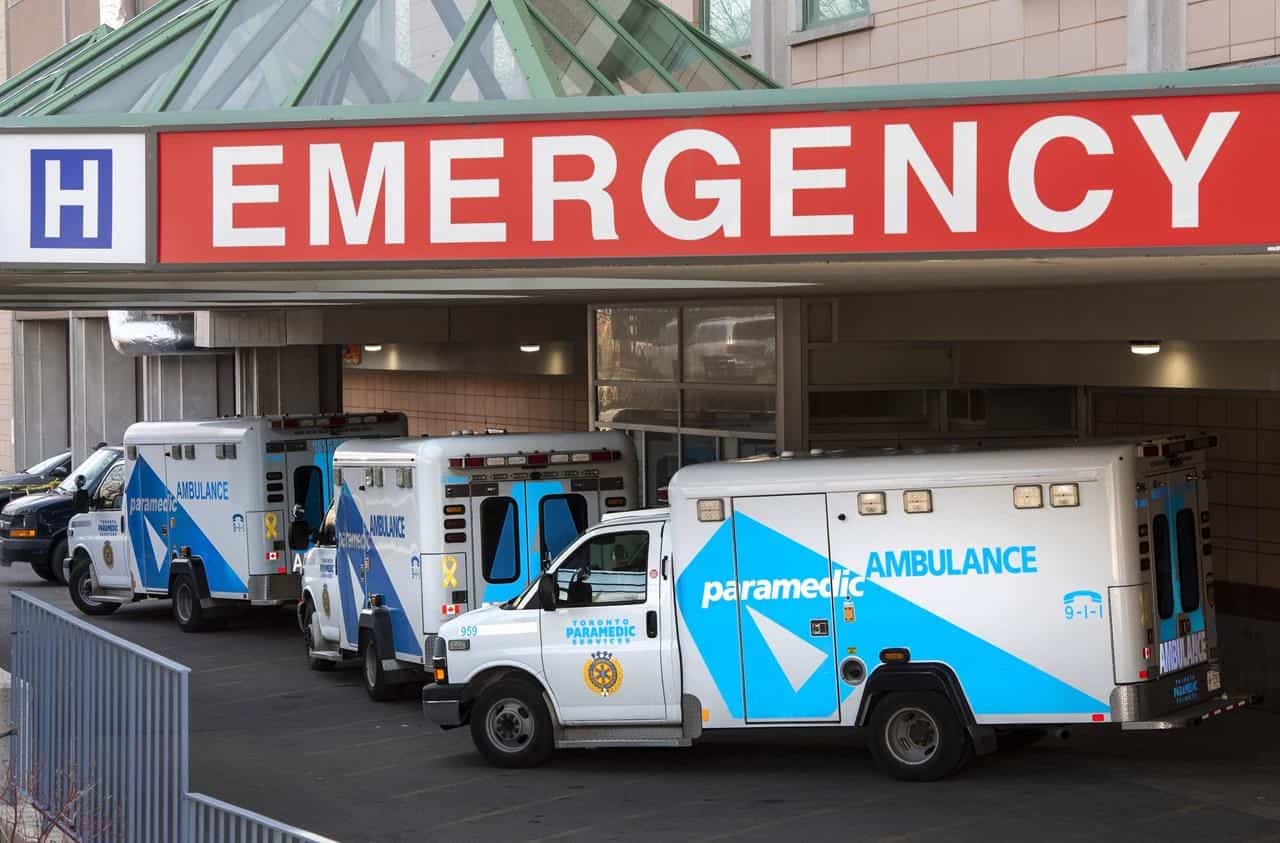Ontario suggests ways to reduce ambulance off-load delays
Published February 24, 2022 at 9:00 am

TORONTO — Ontario is telling emergency services to consider having paramedic crews tend to more than one patient at a time in hospital ERs as one way to reduce delays.
Ambulance offload delays, when paramedics wait in an emergency department for a patient to be transferred to the care of a hospital, have been exacerbated by the pandemic and have at times meant some regions are left with no available ambulances.
A recent memo sent by the government’s assistant deputy minister of emergency health services to paramedic chiefs offers guidelines for ways to “alleviate pandemic-related stressors” contributing to offload delays.
“The ministry encourages paramedic services and their hospital partners to utilize existing resources for tailored solutions that meet the needs of their community and specific patient populations,” the memo said.
One suggestion is “batching” patients, so paramedic crews can more quickly return to service.
Another is urging paramedics to take patients to somewhere other than an emergency department, but under current law they’re still required to take people to hospital-based facilities, including urgent care centres.
The Progressive Conservative government has been exploring changes to those rules, including a pilot project announced last year to allow paramedics in 33 municipalities to take palliative care patients to a hospice or treat them on scene for pain and symptom management. As well, in some municipalities, patients with mental health or addictions challenges could be taken to a crisis centre or other community-based setting.
Expanding those options, as well as establishing treat-and-release protocols, and introducing “fit to sit” programs, in which ambulance patients who meet certain criteria can wait in the emergency waiting room without the paramedics, could further ease off-load delays, said Region of Durham Paramedics Chief Troy Cheeseboro.
“Really, what it comes down to is we have to decrease the pressures on the emergency departments and allow that flow through to happen,” he said.
Call volumes were relatively low at the beginning of the pandemic, Cheeseboro said, with residents nervous to visit the emergency department and fewer traffic accidents with people staying home.
But as levels returned to normal, hospital capacity was still strained by COVID-19 patients and in December hospital staffing was also under pressure as the Omicron variant infected many hospital workers and sent many more into isolation.
In early January, Durham Region saw about an hour in which there were essentially no ambulances available to respond to emergencies, a situation called code zero, Cheeseboro said.
“In our previous incidents of code zeros, it might last for like two minutes, so you could have a two-minute window where no ambulances are available, and then suddenly you have six trucks available,” he said.
“But on this on the one particular day … we had probably about a one-hour window, where in that one-hour window, we were continuously in and out of the code zero capacity.”
During that time there were significant off-load delays at hospitals, Cheeseboro said. On some days of late, the region has seen offload delays of up to 11 hours, he said.
Ottawa Paramedic Services experienced 750 instances of code zero in 2021, with offload delays the main cause, Mayor Jim Watson said in a January letter to the health minister about the issue.
The Ministry of Health has been working to increase hospital capacity, Watson acknowledged in his letter, but he said Ottawa needs long-term, sustainable solutions to offload delays.
City council approved 14 new paramedic positions in its 2021 and 2022 budgets, but “the Ottawa Paramedic Service is unable to improve service coverage as paramedics are stuck in emergency departments due to offload delay,” Watson wrote.
The City of Toronto said in a January news release that it was relying more frequently on paramedics tending to more than one patient in an emergency department and assigned paramedic supervisors to hospitals across the city to get crews back on the road quicker.
“Delays in off-loading patients into the care of the hospitals remains the single biggest challenge and risk to ambulance availability in Toronto today, recognizing that hospitals also face staffing shortages because of the Omicron variant,” the city said.
Ian Nash, a health and safety representative for the Canadian Union of Public Employees’ Ontario ambulance committee, said initiatives such as batching don’t address the root cause, and what’s most needed is an influx of government funding to add hospital beds.
“Hospitals are just being jammed up and we ambulances can’t off-load, so we’re stuck there,” he said.
“They’ve come up with some solutions, but it’s only a Band-Aid to fix the holes in the dam that’s about ready to collapse completely. We can’t keep continuing on like this. As paramedics we serve the community’s greatest needs. And we cannot serve those needs if we can’t get out there to get to people who need us.”
This report by The Canadian Press was first published Feb. 24, 2022.
Allison Jones, The Canadian Press
INsauga's Editorial Standards and Policies








